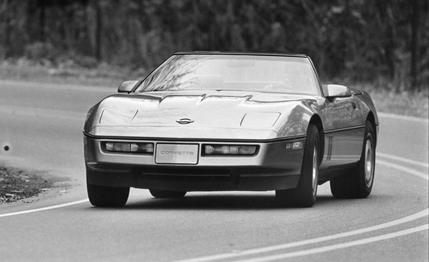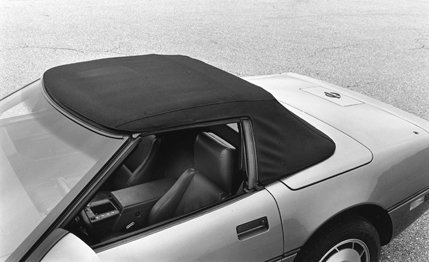
 Archived Road Test
Archived Road Test
The editorial "we" has shuttled between enchantment and annoyance so many times on the Corvette since its 1984 redesign that our tests read like soap-opera scripts. Is this the most advanced production car on the planet, as we once asserted, or an aluminum-and-fiberglass reincarnation of Judas Iscariot, as we later intimated? Stay tuned for the next thrilling episode as "we" neatly dodge the issue by saying, "Boy, it's sure a lot better than it was last year."
There should be no arguing over this latest assessment, for two reasons. For 1986, after a ten-year absence, a convertible version will once again be available. If you like convertibles, hallelujah! If you don't, the coupe continues as before.
The second reason to rejoice is the Bosch-derived anti-lock brake system, which is now standard on both body styles. The stopping distance from 70 mph is only 164 feet, the second shortest we've ever measured for a production car.
We'll come back to this headline stuff after a rundown of the news. Starting in February or March, both the convertible and the coupe will have aluminum cylinder heads as standard equipment. Although this change was originally intended for the start of the 1986 model run, a few design details had to be revised at the last moment, resulting in a delay. The heads do more than just save 40 pounds per car, though this is no small thing in itself. They also contribute to engine efficiency, thanks to the spark plugs' being more centrally located in the combustion chambers and to larger intake ports. And the compression ratio has been raised half a point, to 9.5:1—a typical change in the transition from iron to aluminum heads because of the faster heat transfer of aluminum.


Professional car thieves should have special interest in VATS, the new Vehicle Anti-Theft System, which is also standard equipment. Everyone will notice that the new ignition key has a black pellet inserted in the top of the blade just after the grooves and notches fade out. Anyone who tries to start a new Corvette without the right pellet in his key will notice a lot of cranking but not much starting. This pellet is the resistance module—Chevrolet has fifteen to choose from—and the ignition switch reads it along with the normal grooves and notches. If the key reader doesn't like the proffered pellet, it tells the electronic control module to deactivate certain parts of the fuel system (thieves read this magazine too, so the less said about which parts, the better) for about two minutes. Therefore, a thief determined to use a key instead of a tow truck might have to shuffle little black pellets for as much as a half-hour before finding the right one. And the ordinary thief, Chevrolet says, thinks anything longer than ten minutes is working overtime. So there's a reasonable chance he'll ignore your Corvette, go on down the street, and pick out a nice Porsche instead.
Said thief will be missing out on a few other 1986-model changes. An upshift idiot light sits in the upper left corner of the tachometer. The whole instrument cluster has been slightly reangled to reduce glare. And a center-mounted brake light has been incorporated—at the top of the rear window on the coupe, at the top of the taillight panel on the convertible.
So much for details. Now back to the headlines. The convertible, clearly a nice piece of work, is a joint venture between Chevrolet and ASC, and it entailed far more than just peeling the top off of the coupe. The car's frame is considerably revised, in part by adding stiffness (including an X-brace under the cockpit floor), in part by reengineering sections of the original structure. The result is a convertible uncommonly free of creeks and groans, particularly when you consider its stiff suspension. The few aftershocks you feel in the structure when you've passed over a bump are of high frequency–by itself, a good indication of stiffness–and they damp out quickly. Certain trim pieces quiver and rustle for a longer time, but they do that in the coupe, too.